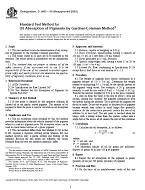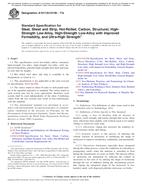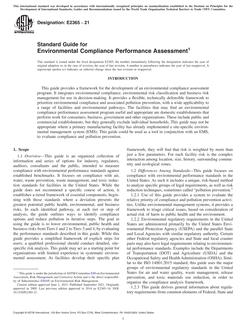1.1 This test method describes a procedure for conducting stress-corrosion cracking tests in an acidified boiling sodium chloride solution. This test method is performed in 25% (by mass ) sodium chloride acidified to pH 1.5 with phosphoric acid. This test method is concerned primarily with the test solution and glassware, although a specific style of U-bend test specimen is suggested.
1.2 This test method is designed to provide better correlation with chemical process industry experience for stainless steels than the more severe boiling magnesium chloride test of Practice G36. Some stainless steels which have provided satisfactory service in many environments readily crack in Practice G36, but have not cracked during interlaboratory testing using this sodium chloride test method.
1.3 This boiling sodium chloride test method was used in an interlaboratory test program to evaluate wrought stainless steels, including duplex (ferrite-austenite) stainless and an alloy with up to about 33% nickel. It may also be employed to evaluate these types of materials in the cast or welded conditions.
1.4 This test method detects major effects of composition, heat treatment, microstructure, and stress on the susceptibility of materials to chloride stress-corrosion cracking. Small differences between samples such as heat-to-heat variations of the same grade are not likely to be detected.
1.5 The values stated in SI units are to be regarded as the standard. The values given in parentheses are for information only.
1.6 This standard does not purport to address all of the safety concerns, if any, associated with its use. It is the responsibility of the user of this standard to establish appropriate safety and health practices and determine the applicability of regulatory limitations prior to use. For specific hazard statements, see Section 7.
Product Details
- Published:
- 10/01/2005
- Number of Pages:
- 10
- File Size:
- 1 file , 210 KB
- Redline File Size:
- 2 files , 440 KB


